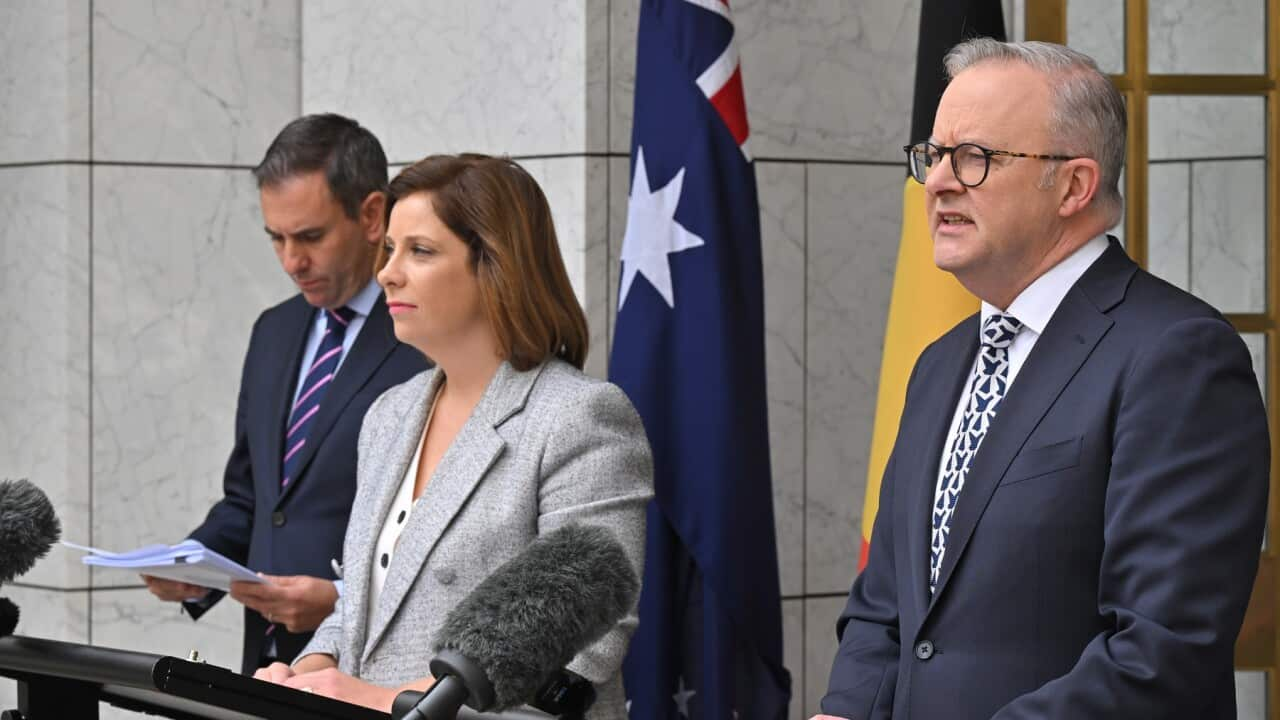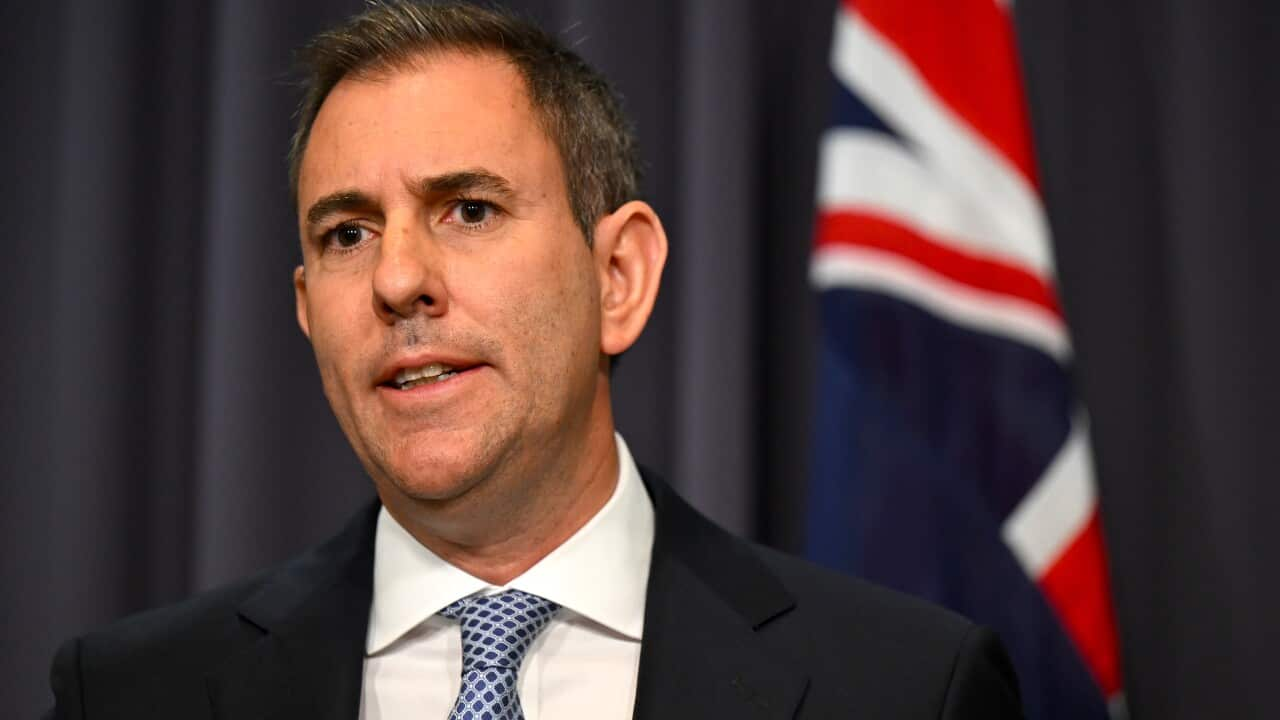TRANSCRIPT
A waitlist of more than 68 thousand older Australians - missing out on vital care when they need it most.
Older Australians are being promised greater support at home, after the federal government announced a suite of aged care reforms last week.
But an already lengthy waitlist has advocates calling for the government to release enough home care packages in its next mid-financial year Budget to clear the bottleneck.
The home care packages are released by the federal government and involve four different levels of care, from just a couple of hours a week of support, all the way through to around 40 thousand dollars a year worth of support for those who need care at home every day.
Maiye Azize is Acting Director of Anglicare Australia, and says, unlike universal access to Medicare or the National Disability Insurance Scheme, home care packages come under a rationed system.
"So we're sort of at the mercy of the government to release packages when it deems fit. So they might release a big bunch of packages, for example. They did that in response to the Royal Commission and that really drew down waiting lists and people were only waiting for about a month for a time, which was great, but then it sort of builds back up again and we wait for them to release more."
The more than 68,000 older Australians waiting for care is more than double those on the waitlist at the same time last year, according to Anglicare's 'Life on the Waitlist' report.
The government's $4.3 billion 'Support from Home' package, which is to come into effect from July next year, is expected to help around 1.4 million older Australians seeking home care.
It comes after the Royal Commission into Aged Care revealed Australia that two thirds of people are using aged care services from home, but most of the aged care budget is allocated to residential aged care.
The government says the new home care package would provide support for clinical care, such as nursing or occupational therapy, along with everyday living, such as cleaning or meal preparation, showering, getting dressed or taking medications.
Ms Azize hopes the government guarantees their target of a maximum three-month wait under the new system.
"The biggest constraint in meeting demand really is the funding. So what we're calling on the government to do in the next midyear budget update is actually just release enough packages to clear this wait list. And the reason we're asking for that is firstly because some people are waiting for up to 15 months and as we found in our report that's leading people to go into hospital early, it's leading people to go into aged care early. That's much more expensive than just looking after them at home. But the other reason that this would be a really smart investment is because they're setting up a new support at home system from July, 2025 and it's just going to be set up for failure if it inherits this not just huge waiting list, but a waiting list that is rapidly, rapidly growing. We want to set this new system up for success."
For those waiting, the consequences are dire.
The Royal Commission into Aged Care revealed that 28,000 people died whilst being on the waitlist in 2018 and 2019.
Advocates like Corey Irlam, Chief Executive of Council on the Ageing Australia, would like to see the government further reduce the wait time to a maximum one month, as opposed to three month, wait.
"So whilst they might've been approved, they aren't actually able to access these vital services during that 15 month wait to support them staying at home. People end up dying on the wait list in the tunes of about 10,000 a year. People end up staying in hospital longer because they can't go home because the services aren't there, and unfortunately, they get forced into residential care where they don't want to be because there's not the services to keep them at home."
He says the Anglicare report highlighted a discrepancy between the government's reporting of a 9-12 month wait time, which failed to include on average 90 day wait for an aged care assessment required to access these packages.
He wants to see the government clarify those figures.
"We need to ensure that the wait time official statistics include the period before assessment as well as the period after they receive their package. By doing this, we'll be able to see if there's blockages in the system because of assessment or blockages in the system because of workforce after somebody's been allocated their services."
Providers like Benetas, which have been operating in the sector for 75 years, are struggling to meet the demand.
In fact, the report highlighted that not a single provider could say they were able to meet commonwealth home support programmes - the entry level support package - in their community.
Funding restrictions was highlighted as the main barrier in the report, followed by workforce shortages.
Benetas Chief Executive Sandra Hills explains.
"This time last year, we had about 34,000 people on the wait list. We now have 68,000, so it's doubled in 12 months, which is really not good. So we've got the same sort of issues as other providers. In some regions, we've closed our waiting lists. In some areas, we actually can provide more services, but we can't find the staff."
She adds for those from culturally and linguistically diverse backgrounds, navigating the system can be even more complex.
Issues around translation only make up one part of the picture.
"There's also cultural attitudes towards residential services and home care too. People coming into the home, attitudes about who should provide the care, and so some of those things really could be improved, but these are things that are happening over time. People from a CALD background have issues. There are complexities in then accessing home care services as well."
A spokesperson for the Minister for Aged Care, Anika Wells, said in a response to SBS that the federal government invested 531.4 million dollars to fund an extra 24,100 Home Care Packages by the end of June next year, bringing the number of people on these packages to a record 300,000.
They added that people assessed as having an urgent need for care are typically assigned their package within one month, and that their Support at Home program will deliver shorter wait times from assessment to receive support.













